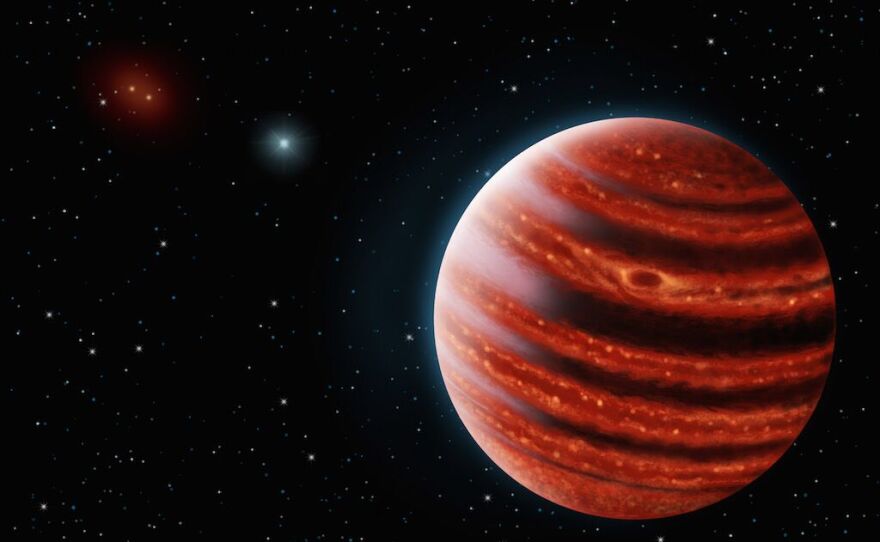Scientists have a new way of finding planets outside our own solar system. Their first discovery, described in a study published Thursday in Science, looks a lot like a young Jupiter.
The planet, dubbed 51 Eridani b, orbits a nearby star much like our sun. Researchers can infer it's relatively young at 20 million years old, weighing about twice the mass of Jupiter, with a temperature around 800°F and an atmosphere containing water vapor and methane.
UC San Diego associate professor of physics Quinn Konopacky says the image she and her dozens of colleagues developed is like a "baby photo" of Jupiter. It shows what our own solar system's gas giant might have looked like long ago.
Detecting 51 Eridani b with a simple telescope would be impossible, because the planet's faint brightness would be eclipsed by light from its star, which is over a million times brighter. Konopacky helped capture direct images of the planet by subtracting out the bright light emitted by its star.
"What we're looking for is the tiny light from a planet right next to the star," she explains. "We often describe this as trying to see a firefly right next to a really bright spotlight. It's very difficult."
This is the first planet found by the new Gemini Planet Imager, located on a remote mountain in Chile. Previous planet-hunting platforms, like the Kepler space telescope, have detected planets indirectly by watching stars dim periodically as planets pass in front of them.
But now, astronomers are starting to see planets head-on. Konopacky says it's a powerful new technique for studying planet formation.
"It's really exciting to see probably the most similar object to a young Jupiter that we've ever seen," she said, expecting Gemini to find many more such planets in coming years. "I think this is just the tip of the iceberg."
Scientists at UC Berkeley and Stanford led the study.
Meanwhile, Kepler may have suffered technical setbacks in recent years, but it's not yet down and out. Scientists continue analyzing Kepler images to discover strange new planets.
This week, a team of scientists including two San Diego State University researchers announced Kepler has located the 10th example of a planet orbiting two stars, like Luke Skywalker's home planet in "Star Wars."






